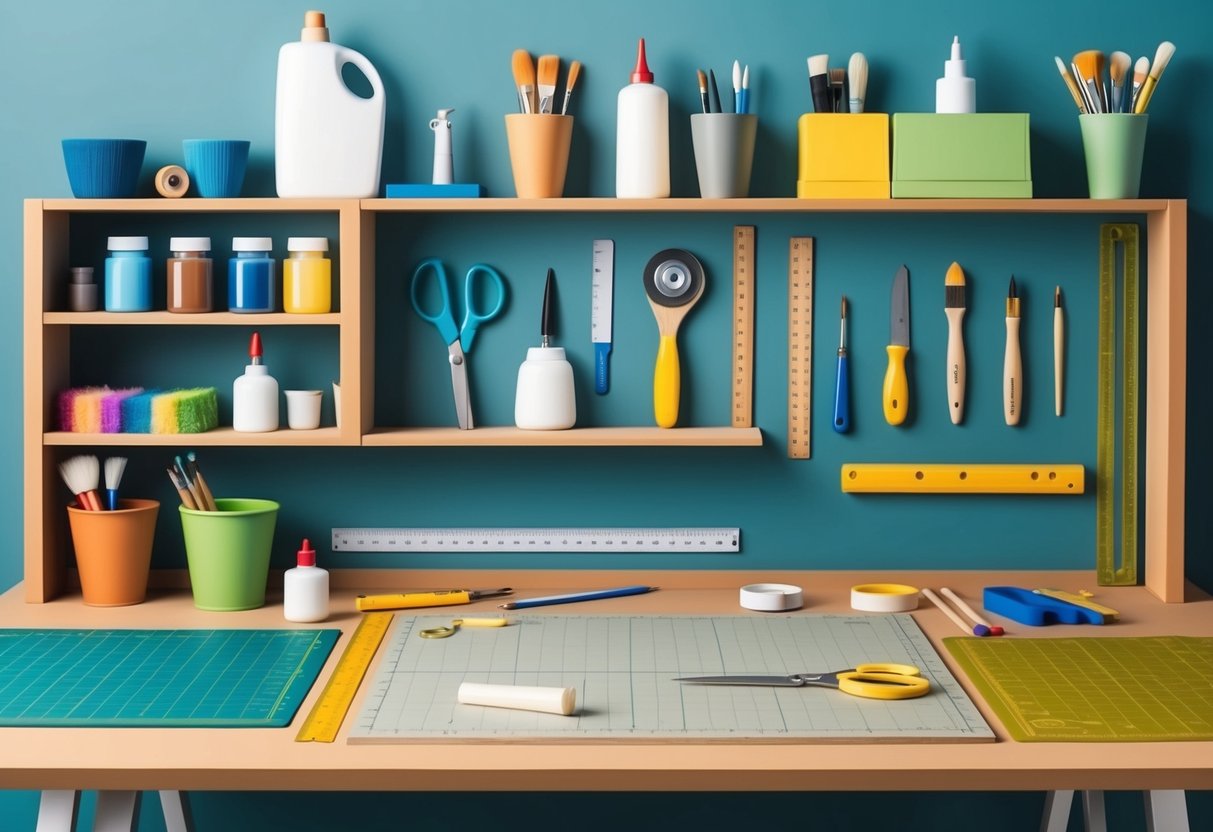
Sanding and Finishing Tools
Achieving a smooth, professional finish in any craft or woodworking project depends on using the right sanding and polishing tools. Selecting the correct abrasives and equipment can remove uneven edges, erase mold-lines, and enhance both durability and appearance.
Sandpaper and Sponges
Sandpaper is available in a variety of grits, ranging from coarse for rapid material removal to extra fine for final smoothing. Choosing the right grit is essential—lower numbers (60–100 grit) are ideal for shaping and rough sanding, while higher numbers (220–400 grit) create a refined, polished surface.
Hobbyists working on delicate projects often opt for flexible sanding sponges, which conform to contours and recesses better than flat sheets. Specialized products like Tamiya sanding sponges offer consistent abrasive levels and last longer because of their high-quality construction.
These sponges are especially useful for smoothing curves, finishing models, and eliminating mold-lines. It’s practical to keep a set of assorted sandpaper grits and sponges in the toolkit to address various needs, and storing them properly extends their life and performance.
A table summarizing grit and use:
| Grit Range | Common Use |
|---|---|
| 60–100 | Shaping, heavy stock removal |
| 120–180 | General sanding |
| 220–400 | Finishing, polishing |
Orbital Sanders and Polishers
For larger surfaces or when consistency in sanding is required, orbital sanders provide efficiency and even abrasion. These sanders move in a random pattern, reducing the risk of noticeable scratch marks that can be left by hand sanding.
An orbital sander is a reliable tool for leveling wooden surfaces, removing paint, or smoothing putty and filler. Polishers, which may also feature orbital motion, help achieve glossy, uniform finishes, especially on painted or varnished surfaces.
Using compatible polishing pads and compounds refines the surface further, enhancing the project’s durability and visual appeal. While handheld sanding suffices for small or detailed tasks, a powered sander greatly improves productivity for medium to large projects.
For an in-depth guide on woodworking essentials, including sanders, see this list of basic woodworking tools.
Adhesives for Crafting

Choosing the right adhesive can mean the difference between a strong, clean finish and a failed project. Each type of glue or bonding method works best with certain materials, so it is important for hobbyists to select adhesives that are compatible with their craft—whether assembling plastic models, handling DIY projects, or joining metal components.
Plastic Glues and Solvents
Plastic glues and solvents are essential for anyone working with plastic models or plastic-based crafts. These adhesives chemically melt and fuse plastic parts for a secure, seamless bond.
Products like Tamiya Extra Thin Cement are especially favored among model builders due to their fine applicator and the use of capillary action, allowing the glue to flow into small joints effortlessly. Most plastic glues are suited specifically for polystyrene and ABS plastics, which are common in scale models and miniatures.
When using solvent-based adhesives, the bond becomes nearly invisible and as strong as the original material because the plastic melts slightly and sets as a single piece. For hobbyists, precision during application is crucial, since excess adhesive can mar the finish.
Always use sparingly and apply to the mating surfaces only. For more information on the array of craft adhesives available for DIY projects, check out this comprehensive overview of craft adhesives.
Super Glues and Cyanoacrylate Options
Super glues, also known as cyanoacrylate adhesives, are valued for their rapid bonding strength and versatility. These glues, such as Krazy Glue, are especially useful when quick fixes are needed or when working with materials like metal, rubber, ceramics, and some plastics where traditional plastic cement fails.
Cyanoacrylate glue works best on clean, non-porous surfaces and requires only a small drop to forge a powerful bond. It is important to note that while these adhesives set in seconds, they can be brittle and less forgiving with flexible or high-stress joints.
Because super glue can also bond skin instantly, using applicator tips, toothpicks, or tweezers for accuracy is recommended. For suggestions on which glue to keep in your basic kit, see this essential guide to craft glues.
Solder and Heat Tools
For crafts involving electronics, jewelry, or metalwork, solder and heat tools play a critical role in joining components. Solder, typically made from a combination of tin and lead or tin and silver, melts at relatively low temperatures to create a conductive connection between metal parts.
A soldering iron is the primary tool used to apply solder, making it invaluable for assembling circuit boards or fixing metal frames. In some DIY projects, a heat gun may also be used to shrink tubing or soften adhesives for removal and rework, making it useful for more advanced tasks.
Proper soldering technique ensures lasting, reliable connections and often requires safety measures such as good ventilation and protective eyewear. Whether repairing a broken wire or building a model railroad, these tools help hobbyists expand their toolkit and tackle a broader range of specialty projects.



